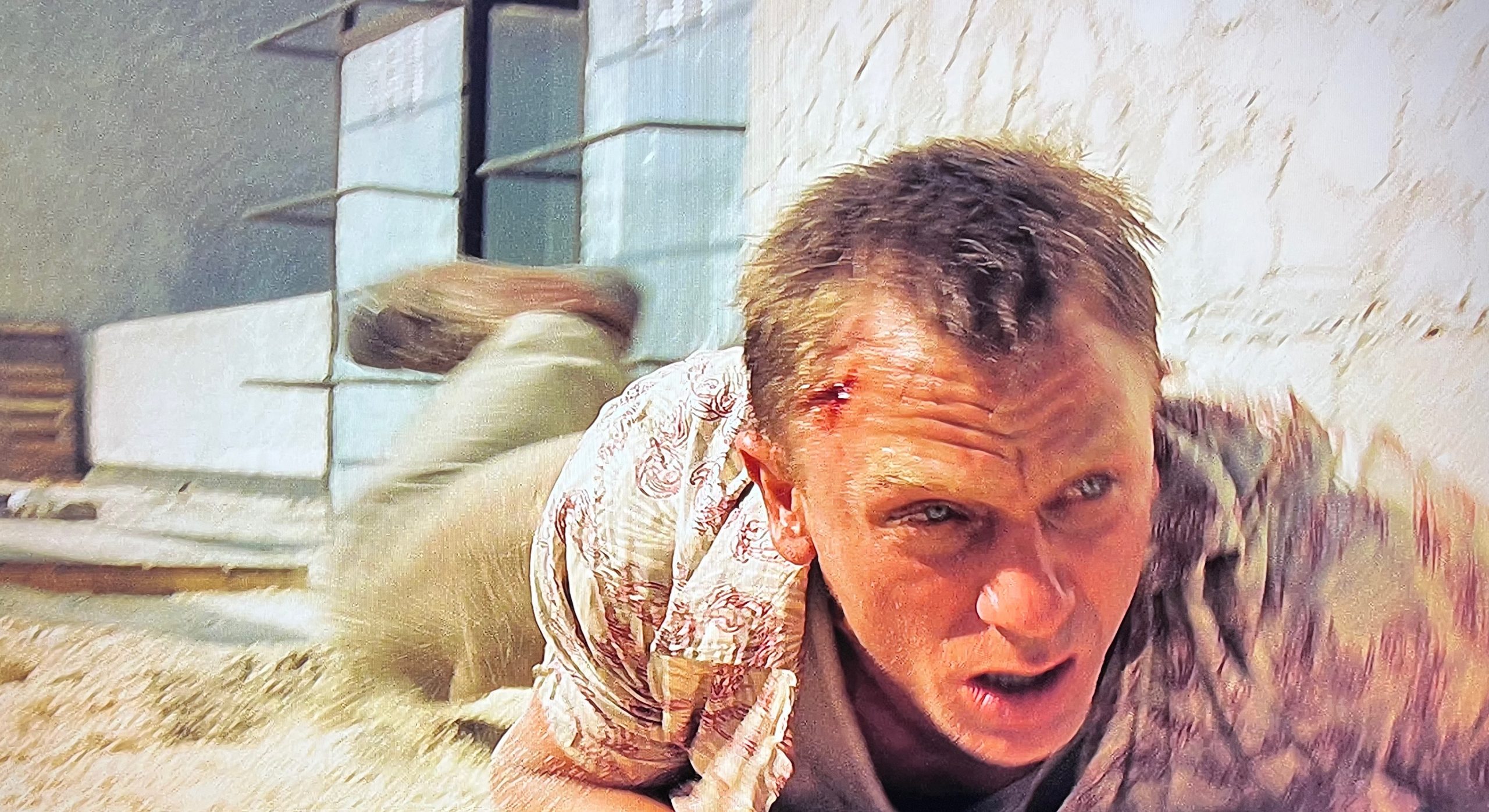Casino Royale and the Reinvention of the James Bond Franchise: A Deep Dive
The 2006 release of Casino Royale marked a pivotal moment for the James Bond franchise, introducing a grittier, more realistic portrayal of the iconic spy. Daniel Craig’s Bond departed from the suave, gadget-filled persona of previous films, presenting a character who bled, struggled, and faced the emotional toll of his actions. This version of Bond was more grounded, showing vulnerabilities that made him relatable, and signalling a shift toward a more serious, character-driven narrative within the franchise.

Daniel Craig as James Bond (2006)
A Gritty New Bond
Gone were the invisible cars and high-tech gadgets. Casino Royale focused on raw, visceral action and grounded storytelling. The opening scene, shot in black and white, sets the tone by showing Bond’s first kills and his internal conflict, highlighting the emotional weight of his profession. This shift in tone removed the fantasy elements, making Bond more relatable as a character who grapples with his violent profession. He is just the perfect character, whether he is fighting bad guys, being the gentleman with the ladies, or playing games at a casino, most of which everyone would be able to find at any popular casino.
The film’s portrayal of Bond as physically and emotionally vulnerable helped redefine the character, aligning with a more serious and realistic approach to the spy genre. This transition from the escapism of earlier films marked a deliberate shift toward a more mature depiction of Bond.

Eva Green as Vesper Lynd (2006)
Vesper Lynd: Redefining the Bond Girl
One of the most significant changes Casino Royale introduced was through Vesper Lynd, played by Eva Green. Unlike the traditional Bond girl trope, Vesper is strong, independent, and an equal match for Bond, shifting the dynamic from earlier films. Their relationship adds emotional depth, showing a more personal side to Bond, as he lets down his guard in a way that feels genuine. Vesper’s ability to challenge and influence Bond humanises him, helping to shape the emotional arc of the film. This connection also highlights Bond’s vulnerability, showing that even the hardened spy is capable of deep emotional attachment, making their relationship pivotal to the story’s progression.
Humanising Bond
Perhaps the most striking aspect of Casino Royale is how it humanises Bond. The film repeatedly shows him dealing with the consequences of his actions, both physically and emotionally, challenging the notion of Bond as an untouchable figure. In a pivotal scene, Bond is seen bloodied and shaken, reflecting on the cost of his work, offering the audience a glimpse into his psychological state. This vulnerable side of Bond was a stark contrast to the invincible heroes of the past, making him more relatable and complex. By stripping away the glamour and invincibility, the film allowed audiences to see Bond as a man deeply affected by his dangerous profession, making him more real and compelling than ever before.
Conclusion
Casino Royale successfully reinvented the James Bond franchise by stripping away the extravagant elements and focusing on character-driven storytelling. By showing Bond as a more flawed, human figure, the film breathed new life into the series, setting the stage for a more modern and realistic portrayal of the iconic spy.






